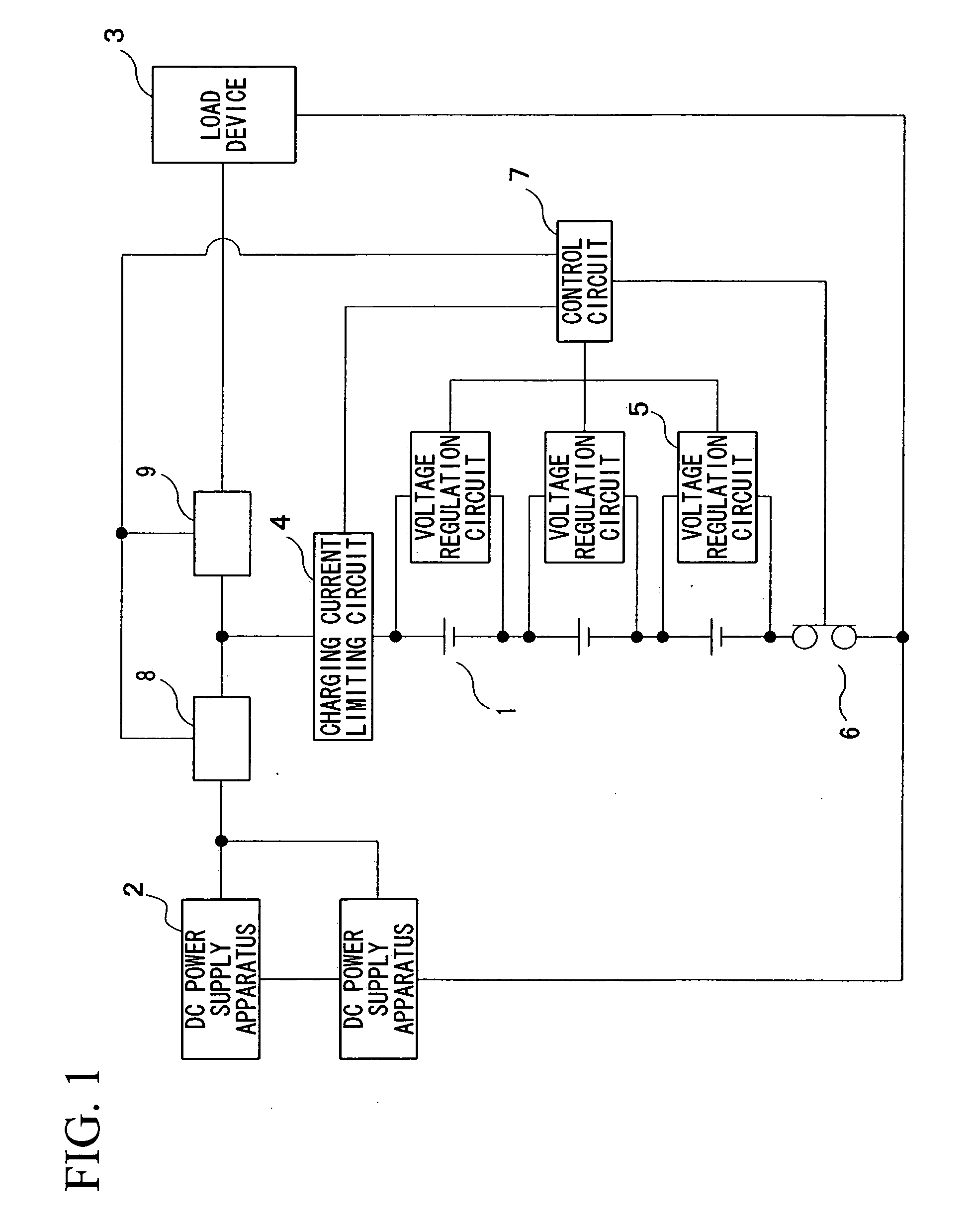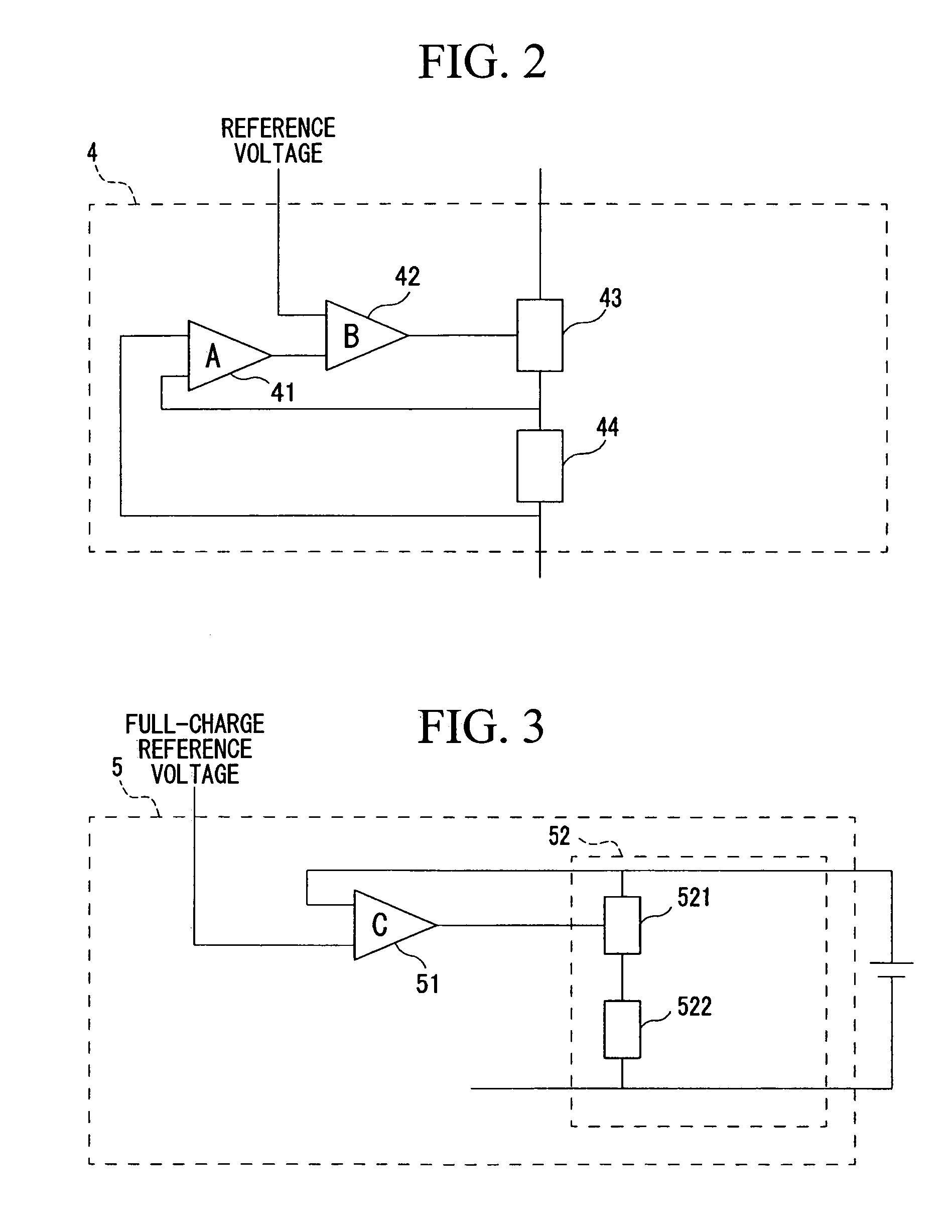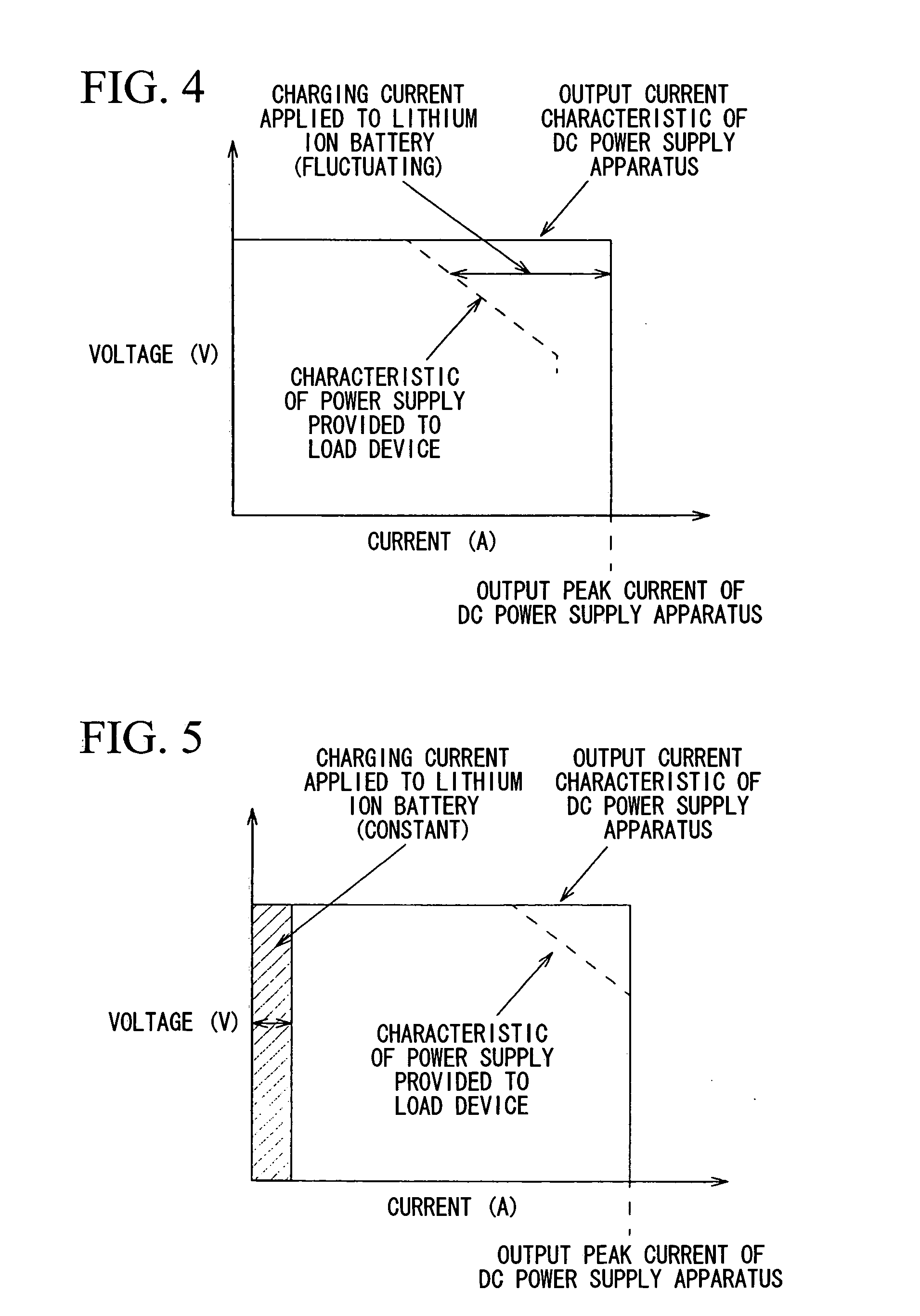Power supply system
a power supply system and power supply technology, applied in secondary cell servicing/maintenance, emergency power supply arrangements, safety/protection circuits, etc., can solve the problems of power supply system that cannot supply uninterrupted power, limit downsizing, etc., to prevent a lithium ion battery capacity drop, eliminate the need for connection switching or disconnecting the lithium ion battery, and constant connection
- Summary
- Abstract
- Description
- Claims
- Application Information
AI Technical Summary
Benefits of technology
Problems solved by technology
Method used
Image
Examples
embodiment 1
(Embodiment 1)
[0058]FIG. 7 shows the embodiment of the charging current limiting circuit 4. A resistor R100 is used for the charging current detecting element 44, and an FET Q100 is used for the charging current control element 43. A plurality of the FETs Q100 are used in parallel connection in accordance with the loss. Also, during discharge the FET Q100 forms a discharge path by being turned completely ON, or the FET Q100 forms a discharging path by being turned OFF and using the parasitic diode D100 of the FET Q100.
[0059] Specifically, the charging current detected by the resistor R100 is input to the differential amplifier constituted by resistors R1 to R4 and the error amplifier A 41, where it is amplified to a value determined in advance. The output thereof is then input to the inverted input terminal of the error amplifier B 42 through a resistor R7. The reference voltage that sets the charging current is divided by the resistors R5 and R6 from the control circuit 7 and inpu...
embodiment 2
(Embodiment 2)
[0060]FIG. 8 shows the embodiment of the voltage regulation circuit 5. In the charging current bypass circuit 52 of the voltage regulation circuit 5, a resistor R200 is used for the bypass current limiting element 522, and an FET Q200 is used for the bypass current control element 521.
[0061] Here, the voltage of the lithium ion battery 1 is detected and input to the inverted input of the error amplifier C 51 via a resistor R15, and the reference voltage from the control circuit 7 is input to the non-inverted input terminal of the error amplifier C 51 via resistors R13 and R14 and a condenser C3. Here, the error amplifier C 51 outputs an output signal so that the two inputs become the same value. The output signal is input to the base of a transistor Q2 via a resistor R18.
[0062] The transistor Q2 provides a signal to the gate of the bypass current control element Q200 via a resistor R19 to control the bypassed current, performing control so that the voltage of the lit...
PUM
| Property | Measurement | Unit |
|---|---|---|
| voltage | aaaaa | aaaaa |
| voltage | aaaaa | aaaaa |
| voltage | aaaaa | aaaaa |
Abstract
Description
Claims
Application Information
 Login to View More
Login to View More - R&D
- Intellectual Property
- Life Sciences
- Materials
- Tech Scout
- Unparalleled Data Quality
- Higher Quality Content
- 60% Fewer Hallucinations
Browse by: Latest US Patents, China's latest patents, Technical Efficacy Thesaurus, Application Domain, Technology Topic, Popular Technical Reports.
© 2025 PatSnap. All rights reserved.Legal|Privacy policy|Modern Slavery Act Transparency Statement|Sitemap|About US| Contact US: help@patsnap.com



